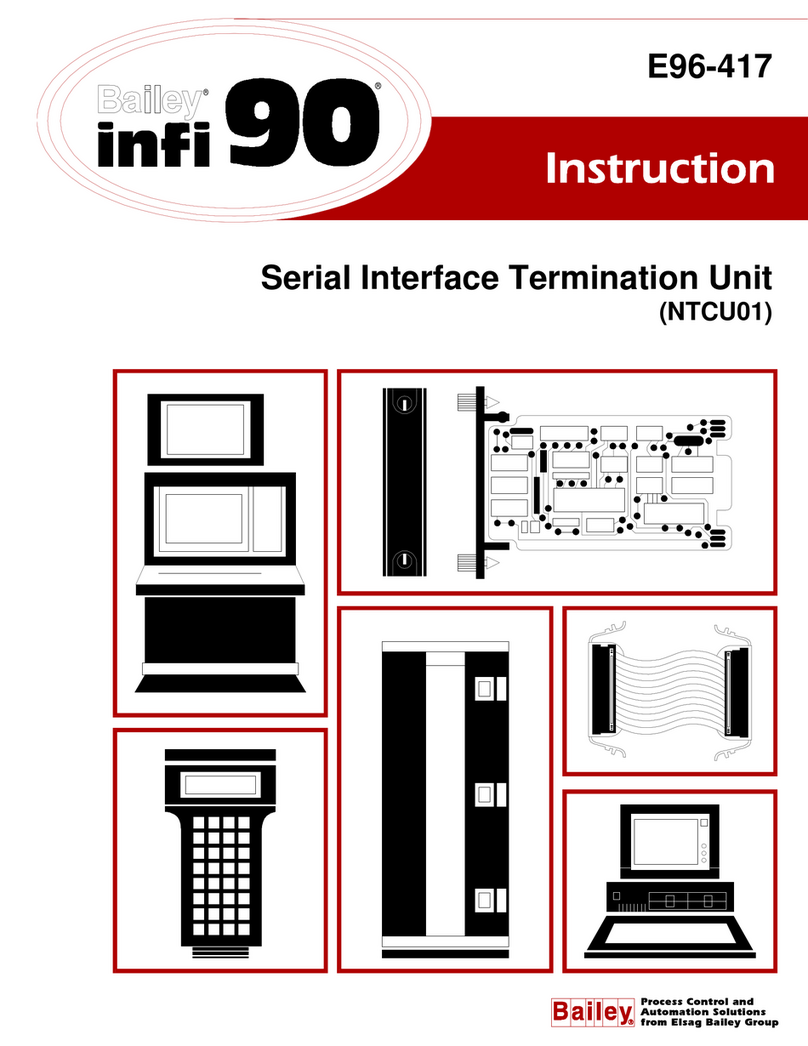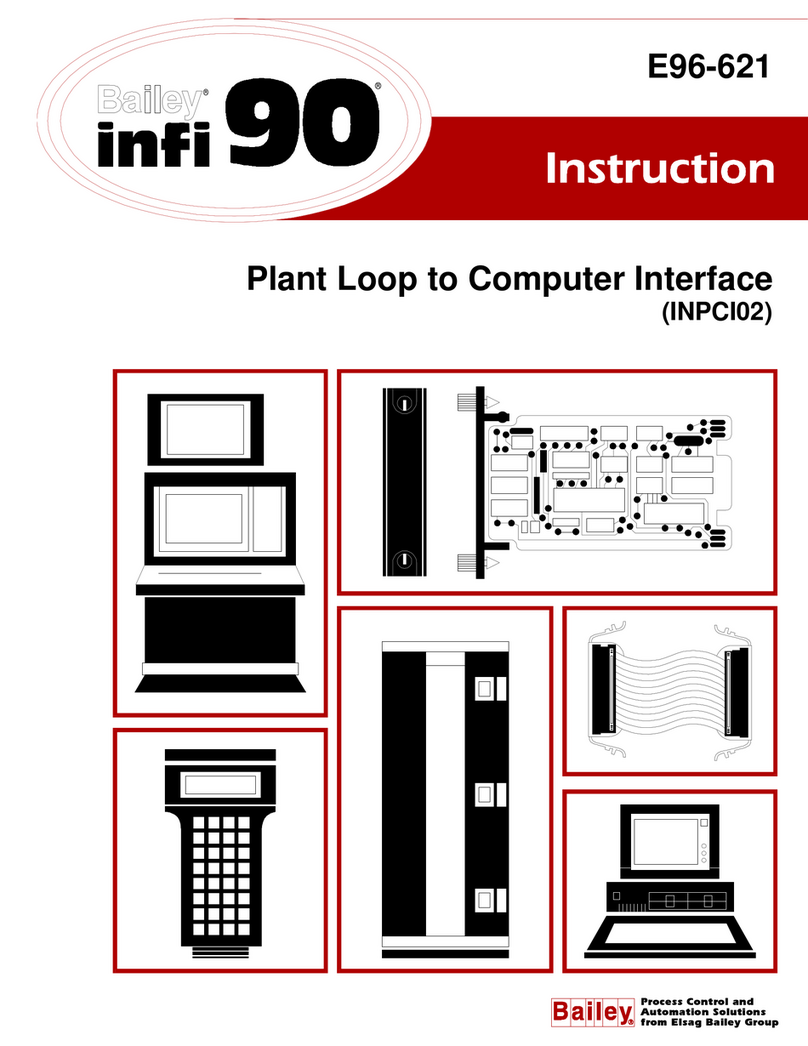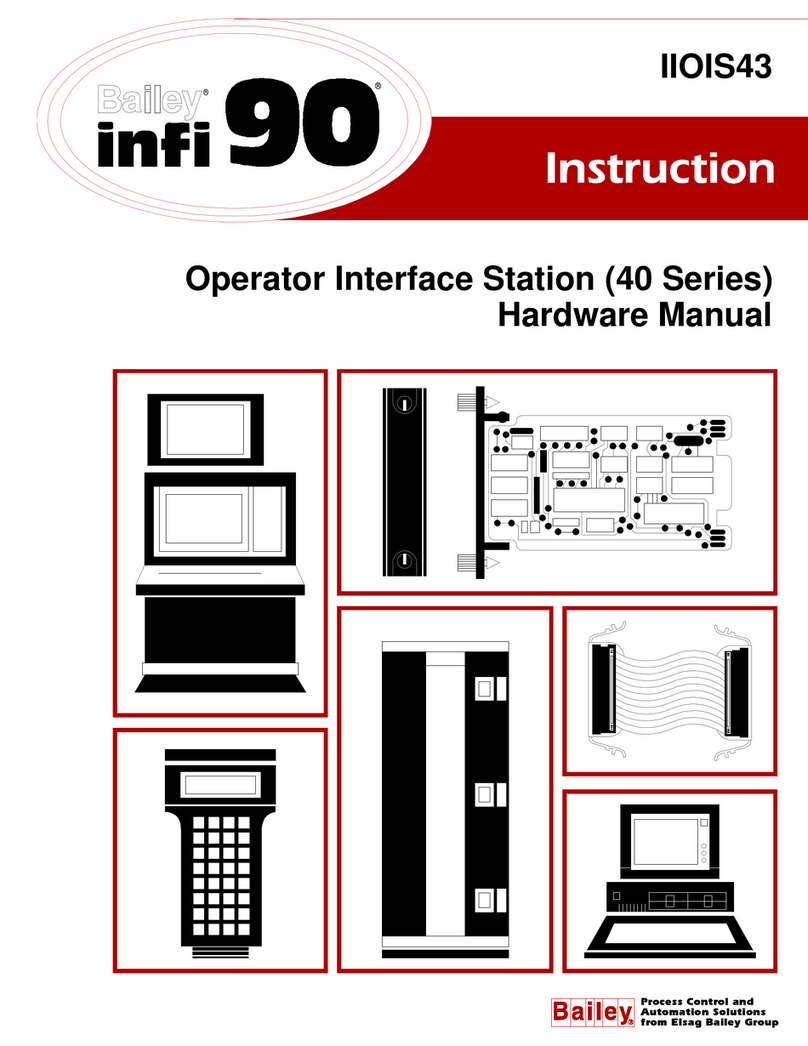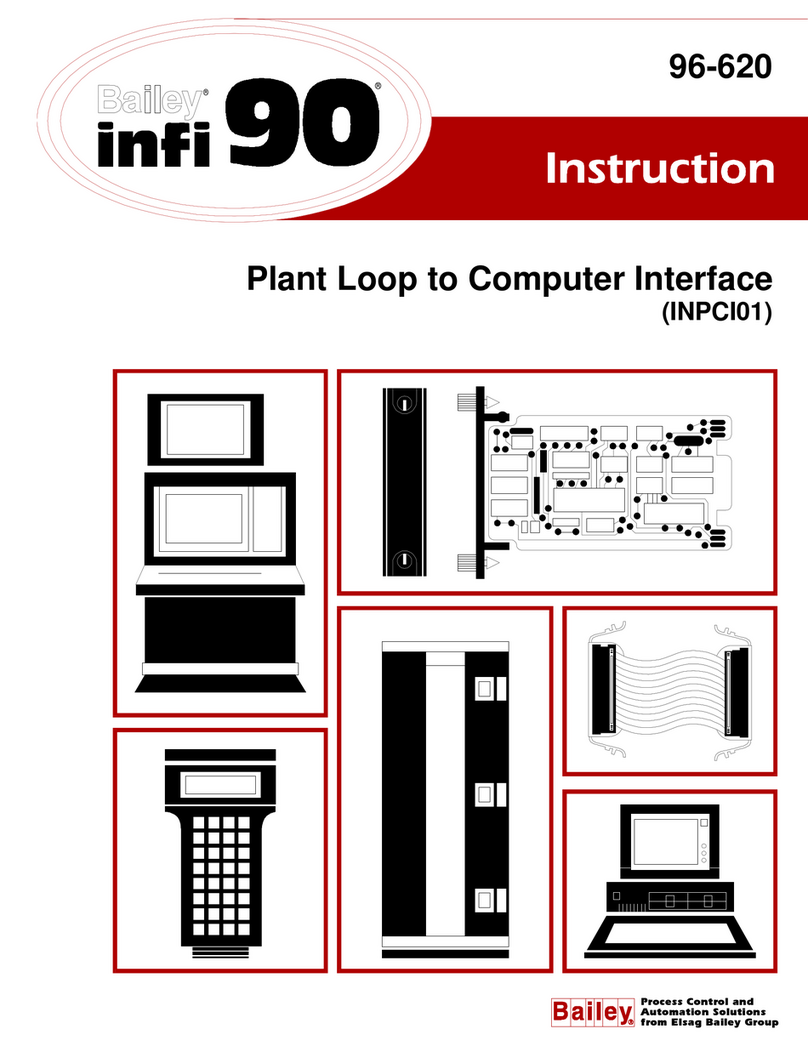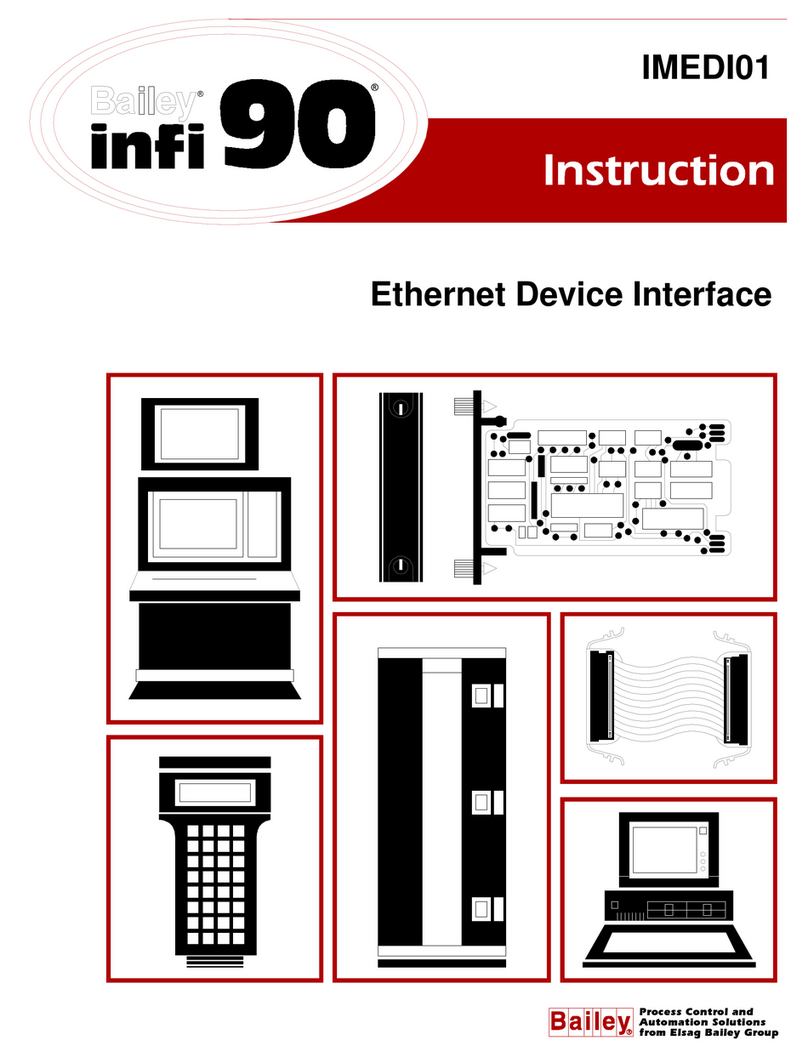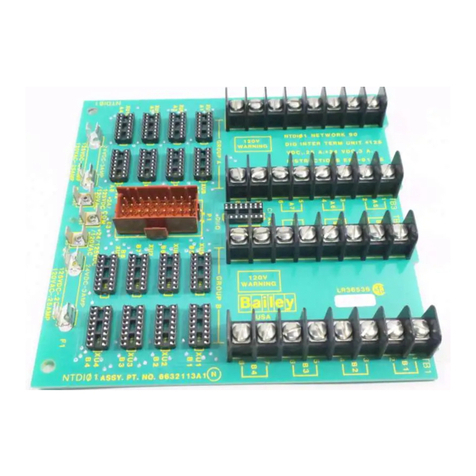
Table of Contents
Page
I-E96-613A iii
SECTION 1 - INTRODUCTION....................................................................................................1-1
OVERVIEW ..................................................................................................................1-1
INTENDED USER.........................................................................................................1-1
INTERFACE DESCRIPTION ..........................................................................................1-1
MODULE DESCRIPTION ..............................................................................................1-2
INNIS01 Network Interface Slave Module................................................................1-2
INIPT02 INFI-NET to Plant Loop Transfer Module ...................................................1-2
IMMPI01 Multi-Function Processor Interface Module..............................................1-3
FEATURES...................................................................................................................1-3
INSTRUCTION CONTENT .............................................................................................1-4
HOW TO USE THIS INSTRUCTION ...............................................................................1-4
GLOSSARY OF TERMS AND ABBREVIATIONS .............................................................1-5
REFERENCE DOCUMENTS..........................................................................................1-5
NOMENCLATURE ........................................................................................................1-6
SPECIFICATIONS.........................................................................................................1-7
SECTION 2 - DESCRIPTION AND OPERATION........................................................................2-1
INTRODUCTION...........................................................................................................2-1
MODULE INTEGRITY ...................................................................................................2-1
INFI-NET to Plant Loop Messages ...........................................................................2-1
Plant Loop to INFI-NET Messages ...........................................................................2-2
INNIS01 NETWORK INTERFACE SLAVE MODULE .......................................................2-2
Messages ...............................................................................................................2-2
Broadcast ........................................................................................................2-2
Time Synchronization ......................................................................................2-2
Multicast .........................................................................................................2-2
NIS Poll ...........................................................................................................2-3
Message Format ..............................................................................................2-3
Message Transmission.....................................................................................2-3
Data Integrity.........................................................................................................2-3
Retry Logic ......................................................................................................2-3
Polling .............................................................................................................2-4
INIPT02 INFI-NET TO PLANT LOOP TRANSFER MODULE ............................................2-4
Exception Reporting...............................................................................................2-4
Control and Configuration Messages ......................................................................2-4
Status Reporting....................................................................................................2-5
Communication Protocol........................................................................................2-5
Framing...........................................................................................................2-5
Sequence Control ............................................................................................2-5
Line Control.....................................................................................................2-5
Error Detection and Recovery ..........................................................................2-6
Start-Up Control..............................................................................................2-6
Redundancy...........................................................................................................2-6
OPERATION OF SERIAL DATA CHANNELS ..................................................................2-6
SECTION 3 - INSTALLATION.....................................................................................................3-1
INTRODUCTION...........................................................................................................3-1
SPECIAL HANDLING ....................................................................................................3-1
UNPACKING AND INSPECTION ....................................................................................3-2
TERMINATION DEVICE CONFIGURATION AND INSTALLATION ...................................3-2

